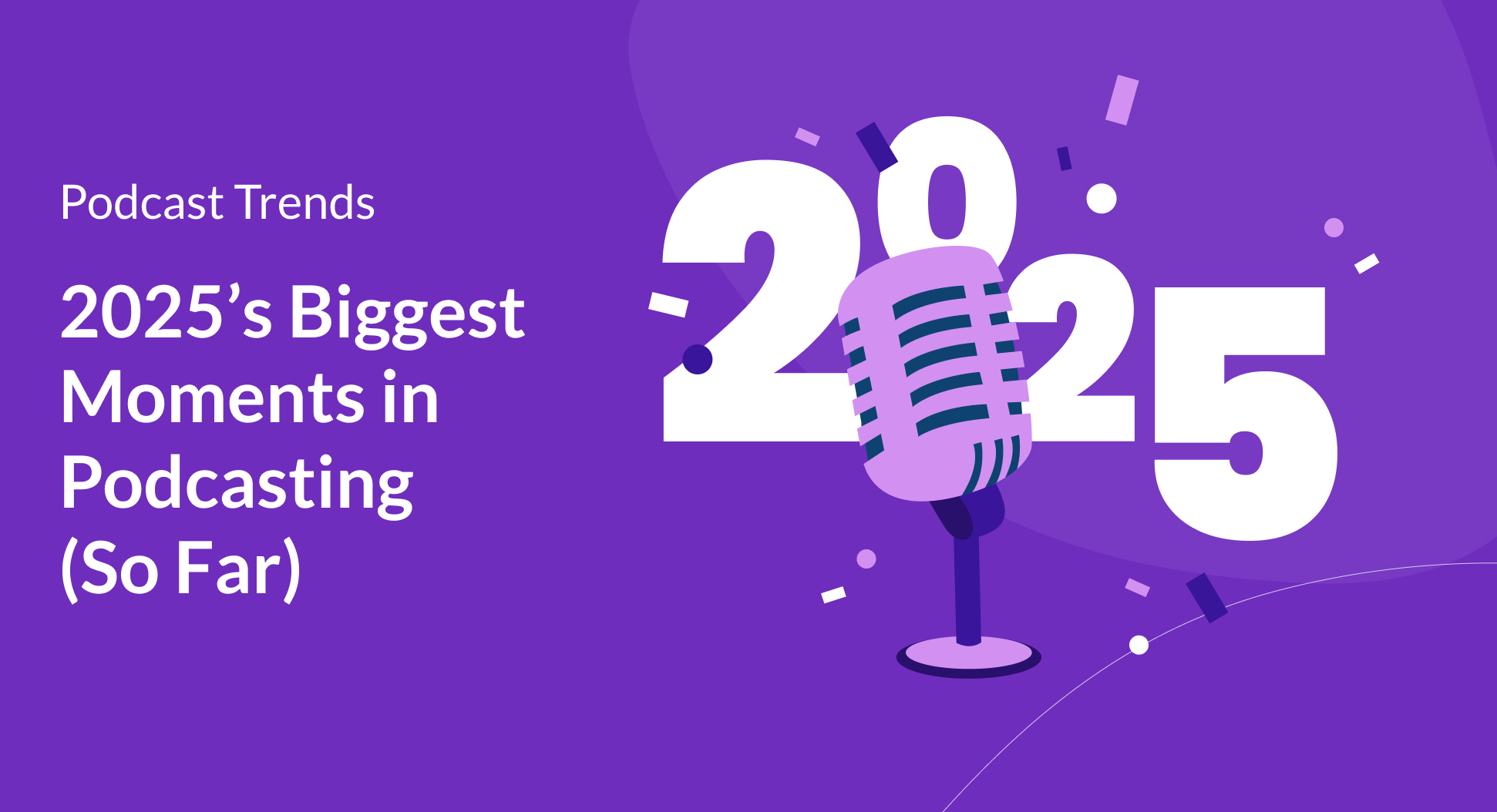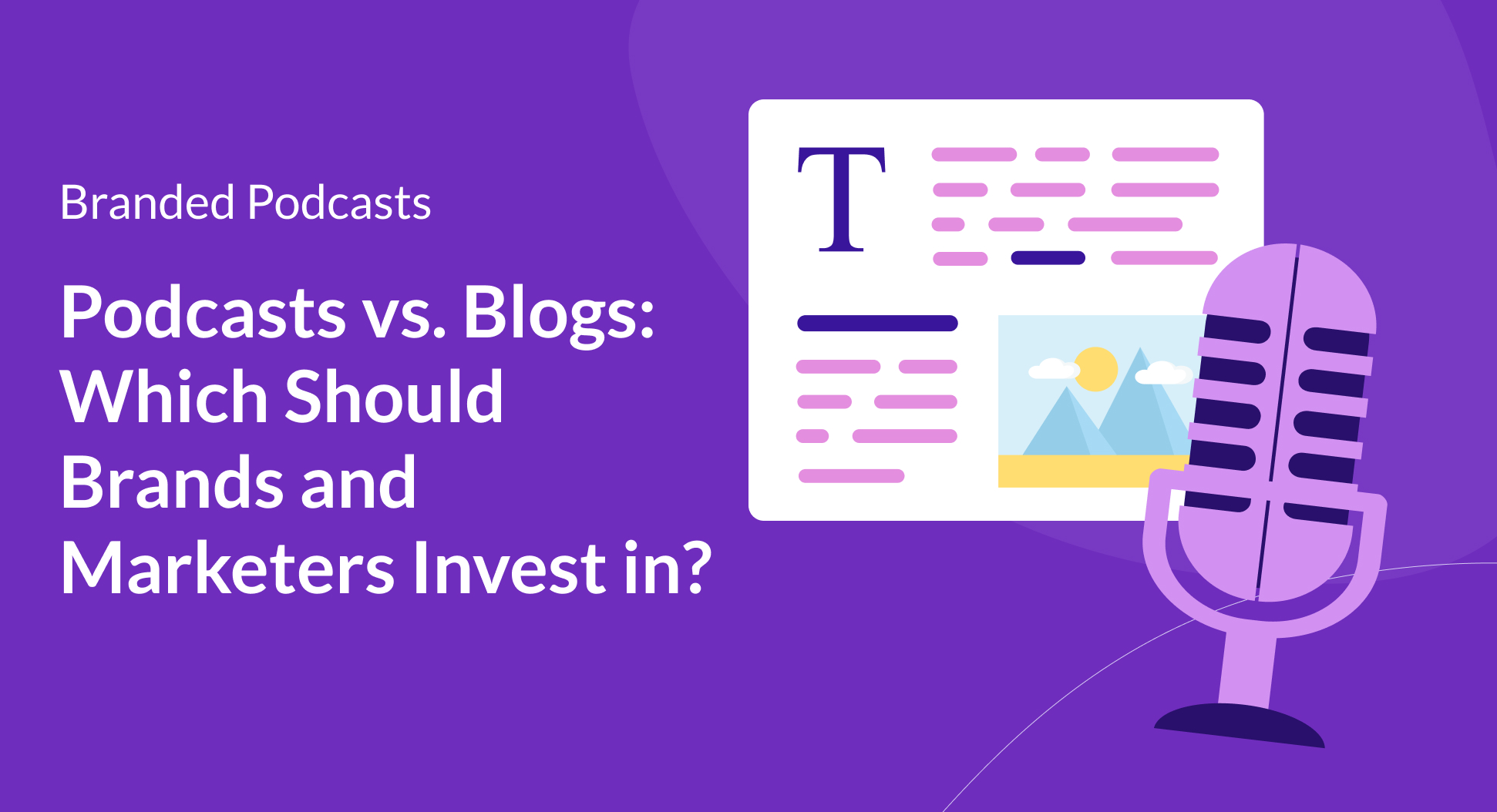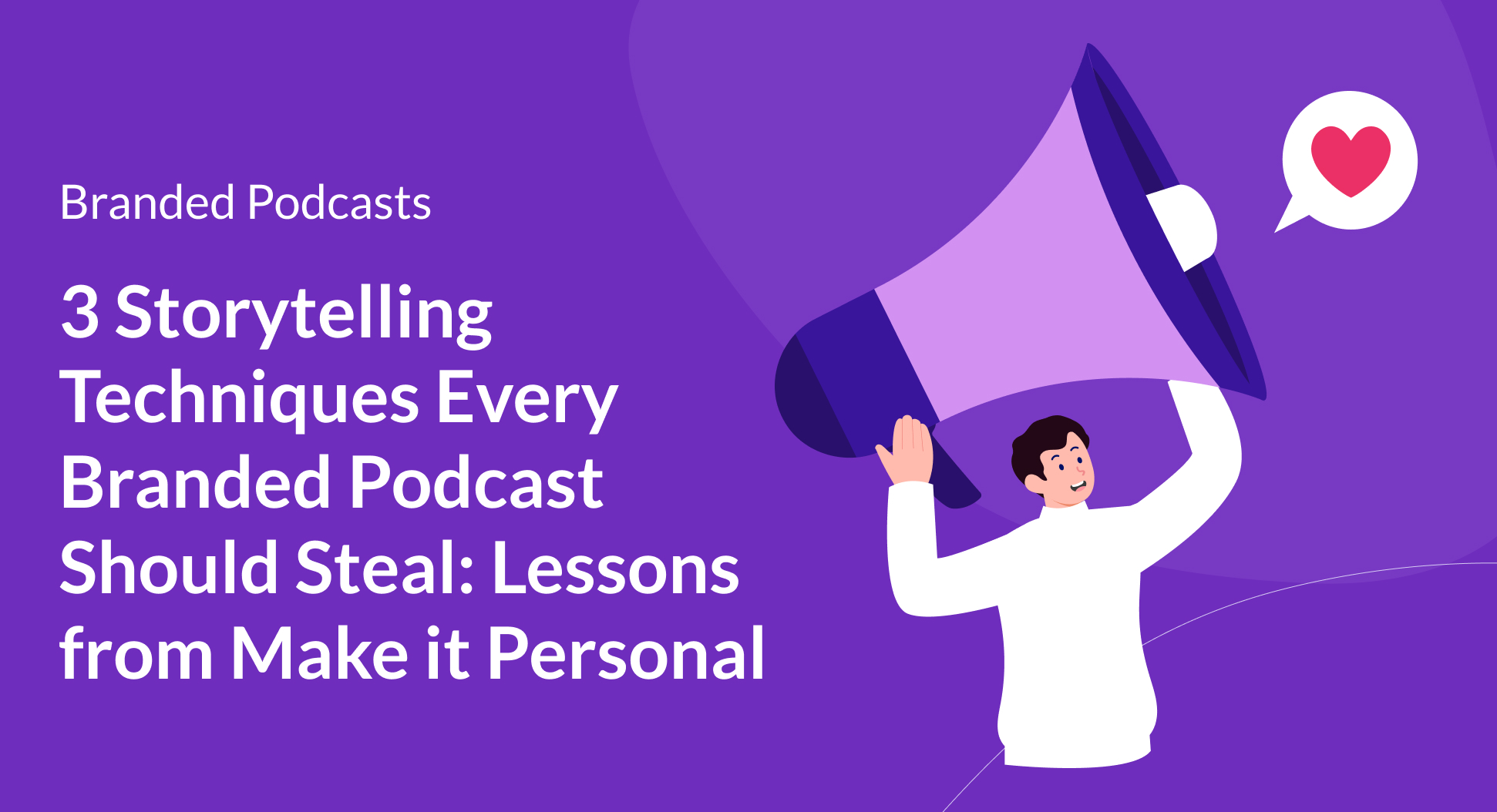Contents
You’ve finally made the plunge—you’re starting a podcast! You’ve got that one-in-a-million idea and you can’t wait to start telling it. The only problem is that your bank account is closer to zilch than zillionaire. And everyone knows you need all sorts of expensive equipment and resources to launch a successful podcast... right?
That’s where you’re wrong. You absolutely can—and should—start your show with a limited budget and there’s no need to sacrifice quality while you’re at it. Find out how with our guide below outlining 10 steps to launching a podcast on a budget.
Step 1 - Objective
Even if you’ve got a unique idea for a show that you’re sure audiences will love, you need to make sure you have a concrete goal in mind. Why exactly are you starting a podcast? What goal or checkbox will this show fill for you? For example, are you trying to generate leads for sales or make connections? Do you want to educate or entertain? Are you hoping to become known as a thought leader in your field?
All of these questions and more will help you streamline your content to fit your objective. Spend a couple of hours with a notebook or a notes app on your phone and figure out the “why” now so that you can better attack the “what” of your show.
Step 2 - Format
You have the “why” and “what” down. Next up is the “how”! You need to figure out which format works best for your podcast. For example, the most common type of podcast is the one-on-one interview, featuring a consistent host (or hosts) and a new guest every episode. This is the most effective format if you are trying to use your podcast to generate leads or build industry relationships in an organic way. You can also leverage your guests’ followers or network to help promote your show.
Other popular formats include the solo commentary (or “solo-casts”), featuring a monologue by the host on a topic or theme, and roundtable discussion, also known as the conversational format, which has two or more consistent hosts and one or two guests per episode. Both of these formats are very useful for educational podcasts or if you’re trying to position yourself as a thought leader.
If those formats don’t appeal, there are hundreds of others you can incorporate into your show. For example, non-narrative storytelling (also known as documentary podcasting) allows you to take true stories and transform them into an audio story with high production and sound design. Alternatively, you can make use of repurposed content by taking recordings of live events and transforming them into a podcast (e.g. the TED Talks Daily).
Step 3 - Naming your Podcast
The title of your show is paramount to attracting listeners, especially if you want to take advantage of SEO and keyword rankings and make sure your podcast appears on those search lists. While you don’t have to get too fancy or technical, try to include whatever keyword you want your show to be associated with into your title. When it comes to titling individual episodes, you can also use tools like Ubersuggest to find keywords that have a high search volume and, ideally, low competition.
However, don’t create episode titles solely to rank for SEO! After all, they still need to appeal to potential listeners who come across them. We recommend using Ubersuggest or similar tools to get a feel for what’s trending. So, when you’re preparing for your next episode, do some research on trending keywords related to the topic of your choice. You can create a list of keywords that you want your podcast to rank for, and develop an outline for your episode or a list of questions so that you can naturally work them in.
Step 4 - Structure
Structure is essential to ensure each episode of your podcast is engaging, organized, and, above all, recognizable. Having a consistent structure is a key part of the ‘brand’ you’re building for your podcast and will actually help you when planning your content in future!
When creating a structure, have a think about the following: What is the most logical but engaging way to order your content? What do you want your podcast to sound like? Will there be breaks? What journey are you taking your audience on? What do you want your audience to take away from each episode? How engaged do you want your audience to be?
Below you can find a sample structure for a podcast episode featuring a one-on-one interview:
- Short Teaser
- Introduction to Podcast Series, Episode, and Host
- Introduction to Guest
- Body of the Podcast - Topic 1 - Topic 2 - Topic 3
- Questions from the Audience
- Conclusion and Ending Remarks
Step 5 - Artwork
Every day, thousands of new shows are introduced. So how do you get potential new listeners to take a chance on yours? Your artwork acts as the very first impression listeners get of your show and should be optimized to draw them in. However, it also communicates the type of quality that listeners can expect from your show. When your artwork is amateurish or low quality, it subconsciously tells listeners that they can expect a low-budget, low-production podcast.
Step 6 - Recording and Audio Editing
Here comes the moment you’ve been dreading. Up until now, you’ve gotten away with spending very little on your podcast with some creative budgeting and ingenuity. But what about all that expensive, premium, top-of-the-range equipment you’ll need to record your episodes? Despite rumors to the contrary, you actually don’t need the very latest microphone, mixer, interface, and shock mount for your new podcast, expenses which can easily run you into the thousands. Instead, try to budget between $100–500 for your initial equipment. Check out our product recommendations for recording equipment.
After recording, audio editing has one of the biggest impacts on the quality of your show. You can do it yourself or choose to outsource the editing to an expert. Quill has some very cost effective audio editors that can provide you with either DIY training or quote you on a per episode rate. Alternatively, you can make use of free audio editing software.
Step 7 - Linking your Podcast
You’re planned, recorded, and edited your podcast episode. How do you get it out there? You need to link it to a listening platform. When linking your podcast, it’s important to remember that listeners are often split between popular listening platforms. For example, 40% of your listeners might prefer Apple Podcasts, whereas 50% are on Spotify, and 10% use Google Play. Based on your analytics (see step #9), determine the most popular platforms that your audience tunes into. After this, you can create a LinkTree to give listeners the option to be directed to their favorite platform when they click your link.
Step 8 - Publishing your Podcast
It’s finally time to publish your finished episode. In order to publish your podcast on major platforms such as Spotify, Apple, and Google Play, you have to sign up for a media hosting site. These sites have two primary functions: (1) storing the final audio files for your podcast that go live, and (2) generating an RSS feed which you'll need to submit to platforms such as Apple, Spotify, and Google Play. A range of media hosting sites are available depending on your budget. We recommend Anchor (free), Libsyn (from $5/month), Podbean (from $9/month), and SimpleCast (from $15/month).
Step 9 - Keep an Eye on Your Analytics
As we’ve mentioned before, keeping track of your analytics for your podcast is important for a whole range of reasons, from identifying your audience to seeing which content your listeners most enjoy. Platforms like Apple and Spotify, in addition to being your primary method of distribution, also provide analytic tools specific to their platforms. It’s important to take the time to set these up because each platform will provide you with unique data that can help you paint a fuller picture of who your listeners are and what they like.
Step 10 - Get Your Needs Met
Whether you're just looking for some nice artwork to supplement your show, or to outsource full-scale production, there is an endless list of freelancers and agencies out there to assist you in your podcasting journey. have a wide range of professionals on our platform ready to jump in.
Some services that you might be looking to get help in include:
- Full-scale podcast execution and production
- DIY starter guide: A manual on how to do everything yourself
- Audio editing
- Cover art & logo design
- Scripting & copywriting
- Website design
- Audience growth consulting
- Show audits (i.e. content, technical, promotional, etc.)
- Transcription
- Social media management
- Analytics set-up & podcast distribution


.avif)






.png)

.png)




.png)
.png)
.png)
.png)